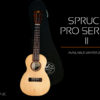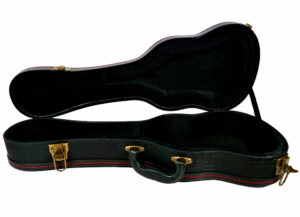Six Essential Ukulele Fingerstyle Techniques
Six Essential Ukulele Fingerstyle Techniques
The delicate plucking of strings, the melodic dance of fingertips, and the rhythmic magic that emerges from fingerpicking on the ukulele is an art that has captured the hearts of musicians and enthusiasts alike. This blog post will delve into the world of fingerstyle ukulele, exploring the six essential techniques that cover most fingerpicking challenges you will meet. Understanding and mastering these techniques is crucial for those new to fingerpicking and for seasoned players looking to expand their repertoire.
The ukulele originated from the Hawaiian Islands, where Portuguese immigrants brought the machete de braga (braguinha), a small guitar-like instrument, to Hawaii in the 19th century. Over time, this instrument evolved into the ukulele we know today. Hawaiian musicians like Ernest Kaai, one of the first to combine melody and chords (chord melody) and Joseph Kekuku, inventor of the steel guitar, were pioneers in developing and popularizing fingerstyle techniques.
The ukulele continues to evolve as modern players borrow techniques from other string instruments, especially guitar. It’s amazing how much you can do with this tiny instrument with four nylon strings!
Now, let’s dive into the six fingerpicking techniques essential to mastering fingerstyle ukulele. These techniques should cover the majority of fingerpicking ukulele music you will encounter.
Grab Your Uke…
Now, let’s dive into the six fingerpicking techniques essential to mastering fingerstyle ukulele. These techniques should cover the majority of fingerpicking ukulele music you will encounter.
Technique One: Alternating Thumb
Your thumb alternates between the third and fourth strings, while your index finger stays on the second string, and your middle finger stays on the first string:
Technique one is great for repeating patterns like those used in “Travis” picking, where the thumb alternates and adds syncopated melody notes. Named after the influential guitarist Merle Travis, it produces a distinctive, rhythmic sound often used in folk, country, and blues music.
Here are some examples of technique one -Travis Picking



Technique Two – Fixed Position
Your hand stays in a static “fixed” position with the thumb on the fourth string, and the fingers each take a different string (index = 3, middle = 2, ring = 1):
Technique two works well with arpeggiated chords and faster repeating patterns. Remember, techniques switch often and using several techniques in one song is common. Here are six exercises using technique two:



Technique Three – Alternating Fingers
Your fingers alternate on one string. For example, your index and middle finger play on the first string. The ring finger is also used but less frequently, considering there are only four strings. This is an important technique to master, but it’s incredible how many students try to play a faster group of notes with one finger.
There are two strokes to learn: free stroke and rest stroke. The free stroke is when the fingers glide over the top of the strings, and the rest stroke stops on the string. For more details on this important technique, check out this article on classical guitar.


Alright, those are the first three essential ukulele techniques to master. The next technique we will learn is one that all ukulele players do: play chords.
Technique Four – Chords
One of the first things ukulele players learn is how to play chords. Typically, the index finger strum or alternatively using a pick is where most players start. However, with fingerstyle playing, we pluck the strings with the fingers to play the chords.
Technically, keep the hand at a 45o angle and pluck the strings towards the palm like you are squeezing a ball. One of the difficult aspects of playing chords is getting an even volume on all the strings. It takes a lot of practice to develop the control needed to change the volume or attack on individual strings, that is, play one string louder than another (which is very common in chordal melody playing).
Let’s have a look at how this looks:
There are a few ways to pluck a chord with your fingers: 1) solid, all strings played simultaneously with fingers and thumb, and 2) Rolled or broken chords, play quickly in the direction of the arrow one note at a time. Practice the following exercise with both solid and rolled chords:

Need more Ukulele Fingerstyle Lessons? Check out Ukulele Fingerpicking Lesson 1
And now on to contemporary approaches to ukulele playing. Now we learn to use the entire ukulele body as an instrument with extended techniques.
Technique Five – Extended Techniques
Extended techniques refer to all the other “non-traditional” ways to play the ukulele. Using the ukulele as a percussive instrument is an example. This particular technique has become more popular since YouTube came along. There is a good variety of tapping and slapping techniques to explore that add rhythm to expand the ukulele as a solo and accompanying instrument.
Many of these extended techniques have been passed on from the guitar, particularly the flamenco guitar. For example, the golpe is where you strike the guitar with your fingers, or the tambour (tam.) is where you hit the guitar or strings with your thumb.
Modern Ukulele Styles
Modern players like Michael Hedges and Stanely Jordan have taken this tapping technique to virtuoso levels and greatly expanded the scope of the guitar and, hence, the ukulele.
In contemporary ukulele playing, similar percussive techniques may be referred to as “percussive strumming,” “body percussion,” “string snapping,” and “fingerstyle percussion.” The terminology and notation used may vary depending on the specific technique, the style of music being played, and the region or culture from which the technique originated.
The notation of extended techniques has not been standardized, though I have developed a system in “Mastering Fingerstyle Ukulele – Kalymi Music (brentrobitaille.com)” that can be used as a reference. The chart below divides the ukulele into hitting zones, and the hand diagram shows how to tap the ukulele.

For example, taping the ukulele in zone 2 with the thumb would be notated as 2T and tapping the ukulele with the knuckle in zone 1 would be notated as 1K. Watch the video below for examples of ukulele percussion with the added foot stomp:
Finally, the last technique is not a technique on its own but a combination of all the previous five techniques.
Need help keeping motivated to practice? Check out “25 Expert Tips to Learn Your Instrument Faster.”
Technique Six: Combined Ukulele Techniques
Though technique six does not add any new approach to fingerstyle, there are enough nuances to create its own category. Studying all the techniques you have learned thus far is essential, but you will find that most fingerstyle arrangments require combining techniques. As soon as you combine chords and melody (chord melody), you will quickly realize that a new set of challenges occurs.
Five Tips on How to Interpret Fingerstyle Ukulele
- The melody is almost always the most important element of the song, so keep the melody distinguishable. Often, the melody is the highest pitch (on the 1st string) of an arrangement, but sometimes the melody creeps onto the lower strings; either way, keep track of where the melody is and accentuate tastefully. Singing or humming the tune in your head before you begin working through the fingering is always a good idea.
- If you play full or partial chords with the melody at the same time, ensure the chords (harmony) are at a quieter volume. This is hard to master as you must play at two different volumes: the melody is loud, and the harmony is soft.
- In some arrangements, to preserve the melody and harmony of the tune, you will run up against challenging fingerings. There are always some sections more difficult than others, so isolate these “hard spots” and convert them into a stand-alone exercise. Make sure your fingering and rhythm are impeccable, then play a few bars before and after this spot with a slow tempo until there are no mistakes. You should aim for at least five times in a row without an error. At music school, they had us play these “spots” twenty-five errorless times before we were considered ready to perform.
- Practice the left and right hand separately, or focus on one hand at a time as you learn the piece. Hands separate is standard practice for piano players but can also apply to the ukulele with some thought. Before you begin, write down the fingering for both hands on the sheet music, then play one at a time.
- Identify where you will apply phrasing to the piece, where and if there are tempo changes and the dynamics. These suggestions are general but surprisingly overlooked by most players, especially when reading ukulele tablature. Players often overlook the music’s more detailed rhythms and play mechanically, going from number to number. This is expected as you learn the piece, but as you progress, try to memorize the music and add phrasing, tempo changes and dynamics to bring the music to life. If you want to delve even deeper, consider the genre and historical period in which the music was written to bring authenticity to the piece.
A few more tips before we go practice…
Remember, learning to play fingerstyle ukulele is a marathon, not a sprint. Search for more fingerstyle pieces and apply the techniques you have studied; the only thing holding you back is practice, patience and persistence! Here are a few last tips to consider:
- Always start very slow.
- Gradually increase your speed when your fingering is sorted out, and you can play with a few mistakes.
- Practice with a metronome.
- Keep track of your progress.
- Keep your wrists, arms, and shoulders relaxed.
Check back often for more ukulele lessons and leave your comments below.
Good luck!













Add comment